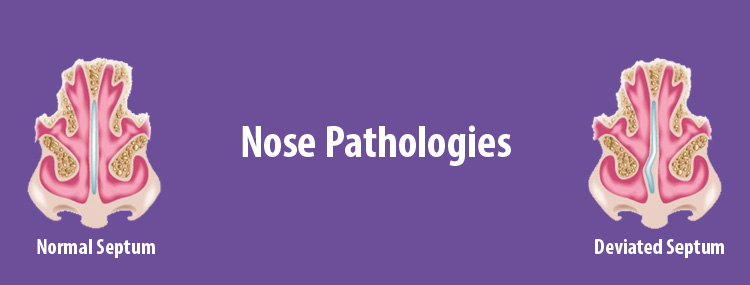Deviated septum is a condition in which the cartilage or the nasal septum that separates the nasal passages is crooked or has been displaced to one side. The nasal septum is a wall that divides the nostrils into equal halves. When the partition is not equal then medication or nose surgery may be advised.
Deviated septum is a common condition and most people with it go through life without treatment. In fact, it is believed that almost 80% of people have some kind of a misalignment of the nasal septum – either mild or severe. Which means one nasal passage is narrower than the other. A nose surgery may be required if the condition is severe. Sometimes, the nose surgery is accompanied by a nose job, medically called rhinoplasty and commonly cosmetic surgery.
Causes of a deviated septum
The causes of a deviated septum could be a birth defect or injury to the nose because of a fall or trauma. Sportspersons often are victims of a deviated septum when hit by the ball during a cricket or football game or punched in the nose while in the boxing ring. Children, especially toddlers, tend to keep falling over during playtime and could suffer injuries to the nose.
Symptoms of a deviated septum
All or some of the symptoms listed below are found in people with a deviated septum.
- Difficulty in breathing
- Sleep apnea
- Snoring
- Nosebleed
- Recurrent or repeated sinus infections
- Nasal congestion
- A headache
- Facial pain
- Postnasal drip
- Loud breathing
Treatment of deviated septum
Most of the symptoms can be corrected with medication however, your doctor may advise surgery, or septoplasty, to cure sleep apnea, snoring or breathing problems if medications don’t work.
Some may go for septoplasty along with rhinoplasty (or a nose job). Rhinoplasty is usually done on patients with a hump in the nose, crooked nose or a flattened nose.
In some cases, a crooked nose framework that requires cosmetic surgery may also have a deviated septum. In such an instance both rhinoplasty and septoplasty may be done to correct both the external and internal frameworks.
Septoplasty
The surgeon corrects the alignment of the septum so that airflow through the nose is improved. It is usually an outpatient procedure and may be done under local or general anesthesia depending on the age and health of the patient plus the severity of the condition.
Septoplasty is performed to give relief from pain and improve airflow through the nose. It will also:
- Control nosebleeds
- Broaden the nostrils
- Provide relief from nasal or sinus headaches.
- Aid in sinus cavity drainage
The procedure may take somewhere between 30 to 90 minutes. You may need stitches to hold the membrane and septum in place or packing the nose with cotton could do the trick too.
Complications
Complications from a septoplasty are not common. Some may experience bleeding, scarring, perforation of the septum or an altered nose shape.
Precautions
You will be advised to take it easy for a few days and not indulge in strenuous activities. Sleep with your head elevated and avoid blowing your nose for at least 3-4 days after the nose surgery. Though the wound will heal quickly the cartilage and other nasal tissues can take 10-12 months to get into shape.
In rare cases, the nasal tissue and cartilage start to shift and over a period of time begin to block the airflow again. This may require a second surgery.
If you are experiencing any of the above symptoms and suspect a deviated septum or are just interested in enhancing your appearance, visit a cosmetic surgeon who will advise you on the best course of action.

